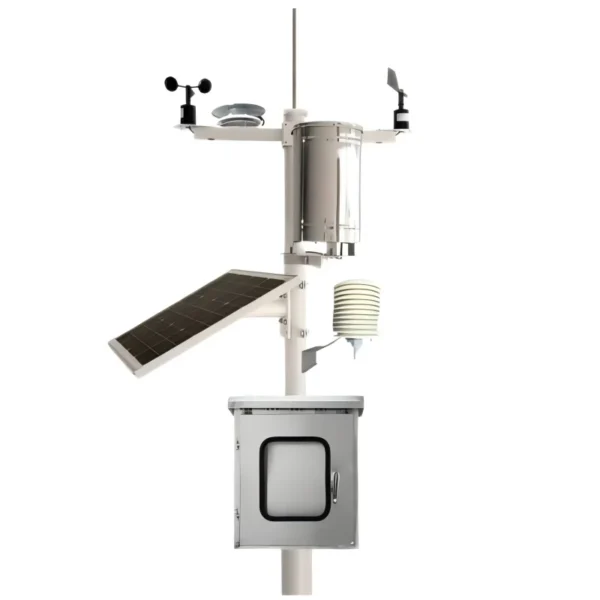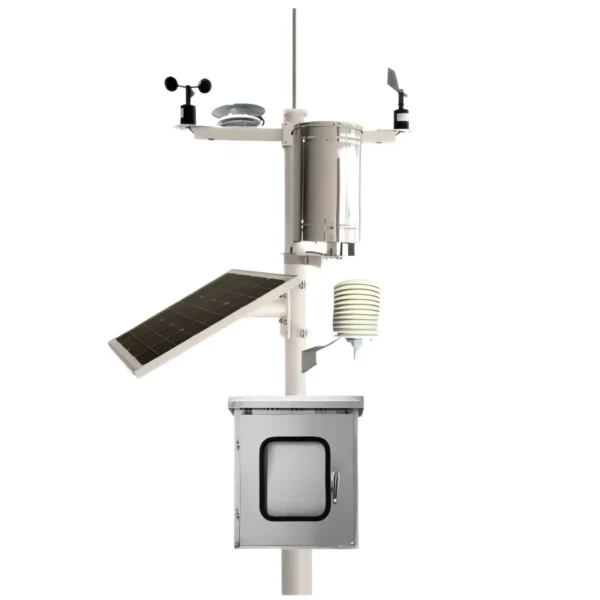
Automatic Weather Station: A Comprehensive Overview

# Automatic Weather Station: A Comprehensive Overview
## Introduction to Automatic Weather Stations
An Automatic Weather Station (AWS) is a sophisticated system designed to collect and record meteorological data without the need for constant human intervention. These stations are equipped with various sensors that measure parameters such as temperature, humidity, wind speed, wind direction, rainfall, and atmospheric pressure. The data collected by AWS is crucial for weather forecasting, climate research, and various industrial applications.
## Components of an Automatic Weather Station
An AWS typically consists of several key components:
– Sensors: These are the primary data collection tools, measuring various atmospheric parameters.
– Data Logger: This device records the data collected by the sensors.
– Power Supply: AWS units are often powered by solar panels or batteries to ensure continuous operation.
– Communication Module: This allows the station to transmit data to a central server or other devices.
– Mounting Structure: A sturdy frame to hold all components securely in place.
## Applications of Automatic Weather Stations
Automatic Weather Stations have a wide range of applications:
– Weather Forecasting: AWS data is essential for accurate weather predictions.
– Agriculture: Farmers use AWS data to optimize irrigation and crop management.
– Aviation: Airports rely on AWS for real-time weather updates to ensure safe takeoffs and landings.
– Environmental Monitoring: AWS helps in tracking climate change and environmental conditions.
– Research: Scientists use AWS data for various meteorological and climatological studies.
## Advantages of Using Automatic Weather Stations
There are several benefits to using AWS:
– Accuracy: Automated systems reduce human error, providing more reliable data.
– Efficiency: Continuous data collection without the need for manual intervention.
– Cost-Effective: Over time, AWS can be more economical than manual weather stations.
– Real-Time Data: Immediate access to weather information for timely decision-making.
– Remote Monitoring: AWS can be installed in remote or inaccessible locations, expanding data collection capabilities.
## Challenges and Considerations
While AWS offers numerous advantages, there are also challenges to consider:
– Maintenance: Regular maintenance is required to ensure sensors and other components function correctly.
– Data Quality: Ensuring the accuracy and reliability of data can be complex.
– Initial Investment: The upfront cost of setting up an AWS can be high.
– Environmental Factors: Extreme weather conditions can affect the performance and longevity of AWS components.
## Future Trends in Automatic Weather Stations
The future of AWS looks promising with advancements in technology:
– Integration with IoT: AWS will increasingly integrate with the Internet of Things for enhanced data sharing and analysis.
– Improved Sensors: Development of more accurate and durable sensors.
– AI and Machine Learning: Use of AI to analyze data and improve weather prediction models.
– Miniaturization: Smaller, more portable AWS units for diverse applications.
– Energy Efficiency: Enhanced power management systems to extend operational life.
## Conclusion
Automatic Weather Stations play a vital role in modern meteorology and various other fields. Their ability to provide accurate, real-time data makes them indispensable for weather forecasting, environmental monitoring, and research. As technology continues to evolve, AWS will become even more efficient and versatile, further enhancing our understanding of the atmosphere and improving our ability to predict and respond to weather events.
Keyword: automatic weather station
Categories: News